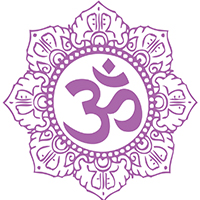Glossary of Hinduism terms
Aarti
Pronounced “AARa-tee.” In Hinduism, the most common ritual that is performed in front of the image of a deity, whether in a temple or in a home shrine. It typically consists of waving, in a clockwise motion, various items in front of the deity. It is done in conjunction with mantras or prayers.
Ahimsa
Pronounced “ah-HIM-saa.” The Sanskrit word meaning non-injury in any form, including action, thought or speech. This is an important principle of Hinduism and a core principle of Jainism. For this reason, many Hindus and most Jains are vegetarians, as are significant numbers of Sikhs and Buddhists.
Atman
The essential, eternal self or soul in Hinduism.
Avatar
Pronounced “AV-uh-taar.” Avatars are incarnations of God, who Hindus believe come to Earth at various times to promote dharma and righteousness and to alleviate suffering.
Bhagavad Gita
Pronounced “BAH-gah-vahd GEE-tah.” One of the most popular Hindu scriptures, it literally means “Song of the Lord.”
It is in the form of a conversation between Lord Krishna (an avatar of Lord Vishnu) and Arjuna on the great battlefield at Kurukshetra just before the famous war in the Mahabharata. In the conversation, Lord Krishna illuminates Arjuna on righteous action that is conducive to the well-being of the world and spiritual liberation (moksha), and instructs him on karma yoga (the path of self-transcending action), samkhya yoga (the path of discerning the principles of existence correctly), jnana yoga (the path of wisdom), raja yoga (the path of knowledge) and bhakti yoga (the path of devotion).
Bhakti
Pronounced “BUK-tee.” A Sanskrit term meaning “loving devotion to God,” bhakti inspired major Indian religious movements, including Sikhism, by focusing on the individual’s relationship to the divine.
Bindi
Pronounced “BIN-dhee.” The decoration worn on the forehead by many Hindu women. There are various explanations for the bindi: It can be a blessed symbol that signifies female energy and is believed to protect women and their husbands; a traditional symbol of marriage; a third eye, the eye of inner vision or spiritual wisdom; or simply a decoration like jewelry. It is worn by Indians of all religions.
Brahma
Pronounced “BRAH-maa.” In Hinduism, the name used for God when functioning as creator of the universe. God is referred to as Vishnu when God’s role as preserver is emphasized and as Shiva when the emphasis is on God’s role as lord of time and change. While God has different roles in Hinduism, the divine is always understood to be one. See Shiva and Vishnu.
Brahman
Pronounced “BRAH-mun.” The name of God or the supreme deity in the Vedas. Brahman is described as being beyond all dualities, such as gender or form; the transcendent and immanent absolute reality; the all-pervading energy; and the Supreme Being or primal soul.
It also refers to a member of a Hindu varna (caste) whose traditional family occupation was priestly or scholarly. Traditionally considered by some to be the “highest” caste in India’s caste system, it is also spelled Brahmin.
Caste system
The traditional social, economic and religious structure of Indian society, which divided people into four broad groups, or castes (“varna” in Sanskrit), and multiple smaller groups, or subcastes (“jati”). While it is believed that the system was once simply a division of labor and guild system, determined by skills and aptitude, it became a rigid hereditary hierarchy in which restrictions were placed on one’s social mobility, job opportunities, marriage prospects and even whom one could eat with. Although caste discrimination is illegal in India and most Hindu leaders stress that it is not sanctioned in Hinduism, it is still practiced among followers of all religions throughout South Asia. An additional group, the untouchables, was created from the lowest caste for people who performed tasks considered “polluting” in a physical or spiritual sense. Since the early 20th century, the Indian government has called this group the “Scheduled Castes.” See also Dalit, Harijan, jati, untouchable and varna.
Cow
In Hinduism, the cow represents values of selfless service, strength, dignity and ahimsa (nonviolence). Hindus respect and honor the cow but do not worship it in the same sense they worship a deity. Also, the avatar Lord Krishna was a cowherd and protected cows. For these reasons, Hindus traditionally respect and honor the cow and abstain from eating beef. Since Hindus understand God to exist in all, animals are deserving of respect and compassion.
Dalit
Pronounced “DAH-lit.” A term used primarily as a label of self-identity by those from the Scheduled Castes, or lowest subcastes, who no longer identify themselves as Hindus, be they converts to another religion or no longer of any religious affiliation. The term was coined in the 1800s but did not come into popular usage until the 1970s, when it was adopted by Scheduled Caste members who wanted to separate themselves from both the caste system and from Hinduism altogether. Dalit should not be used to refer to all Scheduled Caste members – only non-Hindus who self-identify that way.
Devi
Pronounced “DEE-vee.” In Hinduism, the female aspect of the divine. For some, she is the power of Brahman, the unqualified absolute. Typically translated as “goddess.”
Dharma
Pronounced “DAHR-muh.” The mode of conduct for an individual that is most conducive to spiritual advancement. It includes universal human values as well as values that are specific to persons in various stages of life. In Hinduism it also refers to individual obligations in terms of law and social law. In Buddhism it is the teachings of Buddha from which an adherent molds his conduct on the path toward enlightenment.
Diwali
Pronounced “dee-VAH-lee.” The Hindu “festival of lights” is one of the most celebrated in the Hindu diaspora. It symbolizes the victory of dharma, and good over evil. The word is a variation of the Sanskrit word “Deepavali” and refers to the rows of earthen lamps celebrants place around their homes. Hindus believe that the light from these lamps symbolizes the illumination within the individual that overwhelms ignorance, represented by darkness. Diwali commemorates the return of the avatar Lord Ram (the incarnation of Lord Vishnu), his wife Sita and brother Lakshman to their capital, Ayodhya, after 14 years of exile. The residents of Ayodhya, overjoyed at the return of their beloved king, lit lamps in his honor. Thus, the entire city looked like a row of lights. Diwali is also observed by Sikhs, who celebrate the release of the Sixth Guru, Hargobind, from captivity by the Mughal Emperor Jehangir, and Jains, who commemorate the day Lord Mahavira attained nirvana, or liberation, after his death in 527 B.C.
Dowry
The social practice of a woman bringing money or valuables to her marriage is still prevalent in South Asia and other parts of the world. It is not a part of Hinduism.
Durga
Pronounced “DOOR-gaa.” In Hinduism, one of the principal feminine forms of the divine and associated, in particular, with the power to overcome evil. She is the consort of Lord Shiva. See Shiva.
Enlightenment
The goal of life in both Buddhism and Hinduism. For Hindus, it is union with God and self-realization. For Buddhists, it is realization of the truth about reality, achieved by following a system of practices (which may especially include meditation), in accordance with the particular school to which an adherent belongs. See Four Noble Truths.
Ganesh
Pronounced “guh-NAYSH.” The beloved elephant-faced representation of God honored by Hindus and followers of other Indian religions, Ganesh is the remover of obstacles. He is revered for his great wisdom and is invoked before any undertaking. He is the son of Lord Shiva and the goddess Parvati. Also spelled Ganesha.
Guru
Pronounced “GOO-roo.” Broadly used to refer to a teacher of any subject, but especially of spiritual matters. In Hinduism, one’s spiritual guru is seen to be a representative of the divine, through whom one is given the teachings and practices necessary for enlightenment.
Hanuman
Pronounced “HUN-oo-maan.” In Hinduism, an incarnation of Lord Shiva and the embodiment of devotion. Hanuman is generally depicted in a monkey form but can assume any form. He is most popular among devotees of the avatar Lord Ram and others following a devotional path. There are more temples and roadside shrines to Hanuman than any other deity in all of North India. For Hindus, Hanuman is one of the finest exemplars of a life of love and service of God.
Hare Krishna
Pronounced “HA-rey KRISH-na.” This Hindu term can refer to a worshipper of Krishna or a mantra to him. It also can refer to a member of the International Society for Krishna Consciousness (ISKCON), which was founded in 1966 by A.C. Bhaktivedanta Swami Prabhupada and is a sect that focuses on the worship and understanding of God as Krishna.
Harijan
Pronounced “HA-ree-jun.” The term literally means “people of God” and was popularized by Mahatma Gandhi to refer to those in the untouchable subcastes. Today, Hindu members of these jatis identify themselves by their sectarian affiliation or with the terms Harijan or Anasuchit Jati (“Scheduled Caste” in Hindi). See caste system.
Hinduism
India’s most popular religious and cultural system and the world’s third-largest religion (after Christianity and Islam). Most followers live in India, but there are large populations in many other countries. Its oldest scriptures are the Vedas.
Hinduism, also known as Sanatana Dharma (“the eternal natural law”), is one of the world’s most ancient religious and spiritual systems and encompasses a broad spectrum of philosophies, ranging from pluralistic theism to absolute monism. Followers believe that God (Brahman), the ultimate reality or truth, can be understood in various ways and often use the two terms interchangeably. This not only reflects the diversity of practice and perspective in Hinduism, but also the belief that this infinite reality is beyond the comprehension of undisciplined minds. Therefore, Hindus celebrate God’s various attributes through different representations. Most Hindus believe in one God, who is all-pervasive, though he or she may be worshipped in different forms, in different ways and by different names. As such, Hinduism can be described as monotheistic and henotheistic: monotheistic in its belief in one God and henotheistic in that any one God can be worshipped without denying the existence of other forms or manifestations of God.
A basic belief in Hinduism is that the soul does not die but is reborn into another life form when the body dies. Under Hinduism’s rule of karma, every act and thought affects how the soul will be reborn. This cycle of birth and rebirth continues until the soul achieves spiritual perfection and is united with the Supreme Being.
Hindus believe that all living beings have souls, and some are revered as manifestations of God. These beliefs have evolved over several thousand years and are embedded in ritual, mystical and ascetic practices. There are many regional variations in Hindu practice.
Hindus have no formal clergy but do have spiritual teachers, or gurus. Capitalize guru before a name on first reference, and use only the last name on second reference. Swami is a title of respect and reverence conferred on a religious teacher and, in particular, one who has taken vows of celibacy and renunciation; it, too, should be capitalized before a name. See Vedas.
Idol
Be cautious in using this word because it can imply that something is a false god. For example, do not use idol to refer to the representations Hindus use in worshipping. The correct term to use is murti. For similar reasons, idol worship is also inaccurate.
Jainism
Pronounced “JI-niz-um.” A sect established in India in the sixth century B.C. as a revolt against Hinduism. It teaches that the way to bliss and liberation from the cycle of birth and rebirth is to live a life of harmlessness and renunciation. Jains do not believe in a creator god; God is any soul who has been liberated from the cycle of birth and rebirth. The supreme principle is nonviolence; Jains believe plants and animals have souls, just as people do, and should be treated with respect and compassion.
jati
Pronounced “JAAH-tee.” A subcategory of varna, or caste. Typically, these subcastes are classified by specific occupations. Initially, jati was not birth-based, but eventually it came to be.
Kali
Pronounced “KAH-lee.” In Hinduism, a form of the goddess, one of the many feminine forms of the divine as mother of the universe. She is the source of protection and liberation.
Karma
In Buddhism and Hinduism, the universal law of cause and effect; the effect (or fruits) of a person’s actions in one’s next lifetime. Lowercase in all references.
Krishna
Pronounced “KRISH-na.” One of the most popular representations of God in Hinduism. He is worshipped as the eighth incarnation of Lord Vishnu and is best-known as the teacher in the Bhagavad Gita. For most Krishna devotees, his name refers to the unqualified absolute, or Brahman.
Lakshmi
Pronounced “LUK-shmee.” In Hinduism, the female counterpart of Lord Vishnu, or God’s role as preserver. She represents light, beauty and prosperity. See Vishnu.
Mahabharata
Pronounced “Ma-haa-BHAA-ra-ta.” The world’s longest epic poem is longer than the Iliad and Odyssey combined. The Bhagavad Gita is one section of it. Known as the “Great Epic of India,” the Mahabharata was written by the sage Ved Vyas and revolves around the conflict between two kingdoms and their great battle more than 3,000 years ago.
Mantra
Pronounced “MUN-tra.” A syllable, word or phrase with spiritual power, it is chanted or held in the mind in connection with meditation or ritual. Mantras are commonly used by Hindus, Buddhists and Jains and are traditionally drawn from Sanskrit scriptures, such as the Vedas. The adherents of some vernacular texts, such as the Hindi Ramcharitmanas, believe their verses have the power of mantra as well. Some of the more powerful mantras consist of a single syllable, the most popular of which is “om.” See om.
Murti
Pronounced “MOOR-tee.” In Hinduism, an image or icon of God used during worship. A manifestation, embodiment or personification of the divine. Do not use the word idol as a synonym.
Nirvana
Pronounced “nir-VAA-nah.” In Buddhism and Hinduism, a state of ultimate peace that is the goal of all beings, which includes freedom from suffering, desire and the cycle of rebirth. The Buddha’s entrance into nirvana at his death is referred to as his parinirvana (pronounced “PAH-rih-nir-VAA-nah”).
Om
In Hinduism, the mantra of the divine. The ancient Sanskrit name for the absolute. All mantras begin with om.
Parvati
Pronounced “PAR-va-tee.” In Hinduism, one of many names for the Universal Mother. A representation of the goddess to whom prayers are offered for strength, health and eradication of impurities. Hindus believe that she is Lord Shiva’s consort.
Puja
Pronounced “POO-ja.” In Hinduism, a generic term for any ritual practice. This can be as simple as an individual saying a prayer or can encompass a complex, multiday ritual involving any number of individuals and priests. Puja generally incorporates a series of hospitality offerings to God.
Ram
Pronounced “Raam.” In Hinduism, one of the two most popular incarnations of Lord Vishnu and venerated hero of the Hindu epic Ramayana. For most Ram devotees, his name refers to the unqualified absolute, or Brahman. Ram’s exemplary life helps to set high standards of dignity and nobility as an integral part of the Hindu way of life. Sita is his wife.
Ramayana
Pronounced “Raa-MAY-yah-nah.” One of the two Hindu epics; the other is the Mahabharata. Originally written in Sanskrit, it is the story of God taking a human form to destroy evil and teach the path of righteous behavior. The most popular telling of the story was written by Tulsidas in Hindi and is called the Ramcharitmanas. It is the predominant scripture in North India and in the Hindu diaspora.
Reincarnation
The belief that a person’s soul is reborn in another body after physical death. It is common in many Asian traditions — including Buddhism, Sikhism and Hinduism — as well as some Native American traditions. According to Hinduism and Buddhism, incarnation in the next life is determined by one’s previous actions. See karma.
Rig Veda
Of the Hindu scriptures, the Rig Veda is the earliest and among the most revered. Also See Vedas.
Sadhana
Pronounced “SAAD-han-aa.” In Hinduism, religious practice that is undertaken on a regular basis for the purpose of purifying oneself to gain wisdom, devotion or enlightenment.
Sadhu
Pronounced “SAA-dhu.” A Hindu ascetic who has renounced advancement in the material world and has dedicated his or her life to the search for wisdom, devotion, God, truth or enlightenment. There are many different types in India, grouped into orders according to their beliefs and practices. They may live in monasteries (ashrams) or as hermits and wanderers. They often live on alms, or provisions and gifts they are given. Sadhvi (pronounced “SAA-dhvee”) is the female form.
Sanskrit
An ancient classical language of India in which most of the texts of Hinduism were written.
Sattva
Pronounced “SAHT-vah.” In Hinduism, the quality of light and goodness.
Shakti
Pronounced “SHAK-tee.” In Hinduism, the active power or manifest energy that pervades all of existence and is represented in feminine names and forms.
Shiva
Pronounced “SHEE-vah.” A popular representation of God in Hinduism. He is worshipped as the lord of time and change. Brahma is the name used for God when God’s role as creator of the universe is described. God is referred to as Vishnu when God’s role as preserver is emphasized. The divine is always understood to be one. Shiva’s consort has the names of Parvati, Kali and Durga. Also spelled Siva (pronounced “SEE-vah”).
Sita
Pronounced “SEE-taa.” In Hinduism, the wife of the avatar Lord Ram, as depicted in the Hindu epic Ramayana. For millions of Hindus, Sita represents the perfect mother and expression of womanly virtue.
Swami
Pronounced “SVA-mee.” In Hinduism, a title of respect and reverence conferred on a religious teacher and, in particular, one who has taken vows of celibacy and renunciation. It literally means one who has self-control. Capitalize before a name.
Swastika
Pronounced “SVA-stik-a.” It is one of the most popular symbols for Hindus, Jains and Buddhists. The word swastika is derived from Sanskrit words that mean “auspicious,” “luck” and “well-being.” It is also a sign of the Sun-God Surya and his generosity. The swastika is one of the 108 symbols of Lord Vishnu and represents the sun’s rays, without which there would be no life. The swastika is used in religious and civil ceremonies in India, both public and private.
The swastika used by the Nazis was a perverted version of the ancient Hindu swastika.
Temple
A building used for worship or religious purposes. Uppercase when part of a formal name or when referring to the ancient Temple in Jerusalem. The word temple is used differently in different religious traditions. It is the place of worship for Hindus, Buddhists and Jews, although Orthodox Jews and many Conservative Jews believe the only temple is the one destroyed in Jerusalem and so they call their congregational buildings synagogues. In the Church of Jesus Christ of Latter-Day Saints, temples are sacred buildings with restricted access; they differ in purpose from meetinghouses, where weekly worship takes place.
Transcendental Meditation
A form of meditation made popular by Maharishi Mahesh Yogi, who introduced it in 1955. TM is acceptable on second reference.
Untouchable
The traditional English term for members of the lowest rung of the caste ladder in India. The term is increasingly being replaced in common usage by other terms, and some now regard it as offensive. In the early part of the 20th century, Mahatma Gandhi began referring to members of the lowest caste as Harijan (“children of God”), while the Indian government adopted the term Scheduled Castes. Since Indian independence, the government has gradually increased the benefits it provides to members of the Scheduled Castes, as well as the Shudra caste of servants and menial laborers, known collectively as the “Other Backward Classes.” See caste system.
Upanishads
Pronounced “oo-PAAN-ish-ud.” The Upanishads are the final sections of each of the four Vedas, or Hindu scriptures. These texts are spiritual dialogues in which teachers and students discuss ultimate questions of human existence.
Varna
Pronounced “VARN-ah.” Varna refers to the four broad groups that make up the caste system in traditional Indian society. They consisted of the Brahman (scholars, teachers, doctors and priests), Kshatriya (warriors, rulers and lawmakers), Vaishya (business people, traders, farmers, and artisans), and Shudra (servants, menial laborers). Later, a fifth varna was created, into which people who performed tasks considered “polluting” in a physical or spiritual sense were placed. Members of this new group were called “untouchables” in English. See caste system.
Vedas
Pronounced “VEH-daas.” Hinduism’s most ancient scriptures. There are four: Rig Veda, Atharva Veda, Sama Veda and Yajur Veda. The Vedas include more than 100,000 verses and additional prose. The term Veda stems from a Sanskrit word meaning knowledge. Many Hindus believe that the Vedas were revealed by God and/or realized by ancient sages.
Vishnu
Pronounced “VISH-noo.” In Hinduism, the name used when God’s role as preserver is emphasized. Shiva is the name used when the emphasis is on God’s role as lord of time and change. Brahma is the name used for God when God’s role as creator of the universe is described. The divine is always understood to be one. For most Hindus, Vishnu is either equated with or a manifestation of Brahman. Vishnu has many avatars or incarnations, the best-known of which are Ram, Krishna and the Buddha. His consort is Lakshmi.
Yoga
Most often associated with body poses, stretching exercises and breathing techniques developed in India. It is a Sanskrit term that means union; yoga is a discipline found in Hinduism. It is the philosophy, process, disciplines, and practices whose purpose is the unification of individual consciousness with transcendent or divine consciousness. One of its eight “limbs” is referred to as asana (also known as “hatha yoga”) and involves various body postures meant to keep the body physically relaxed and healthy as an important prerequisite for meditation.
Reference
religionstylebook.com






























